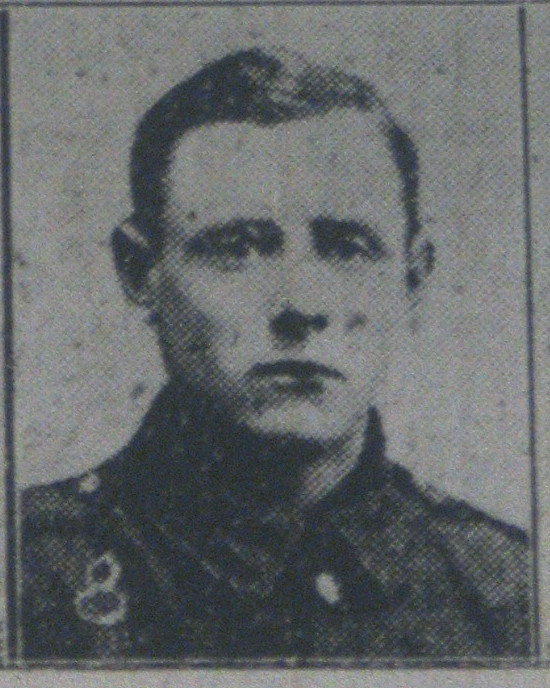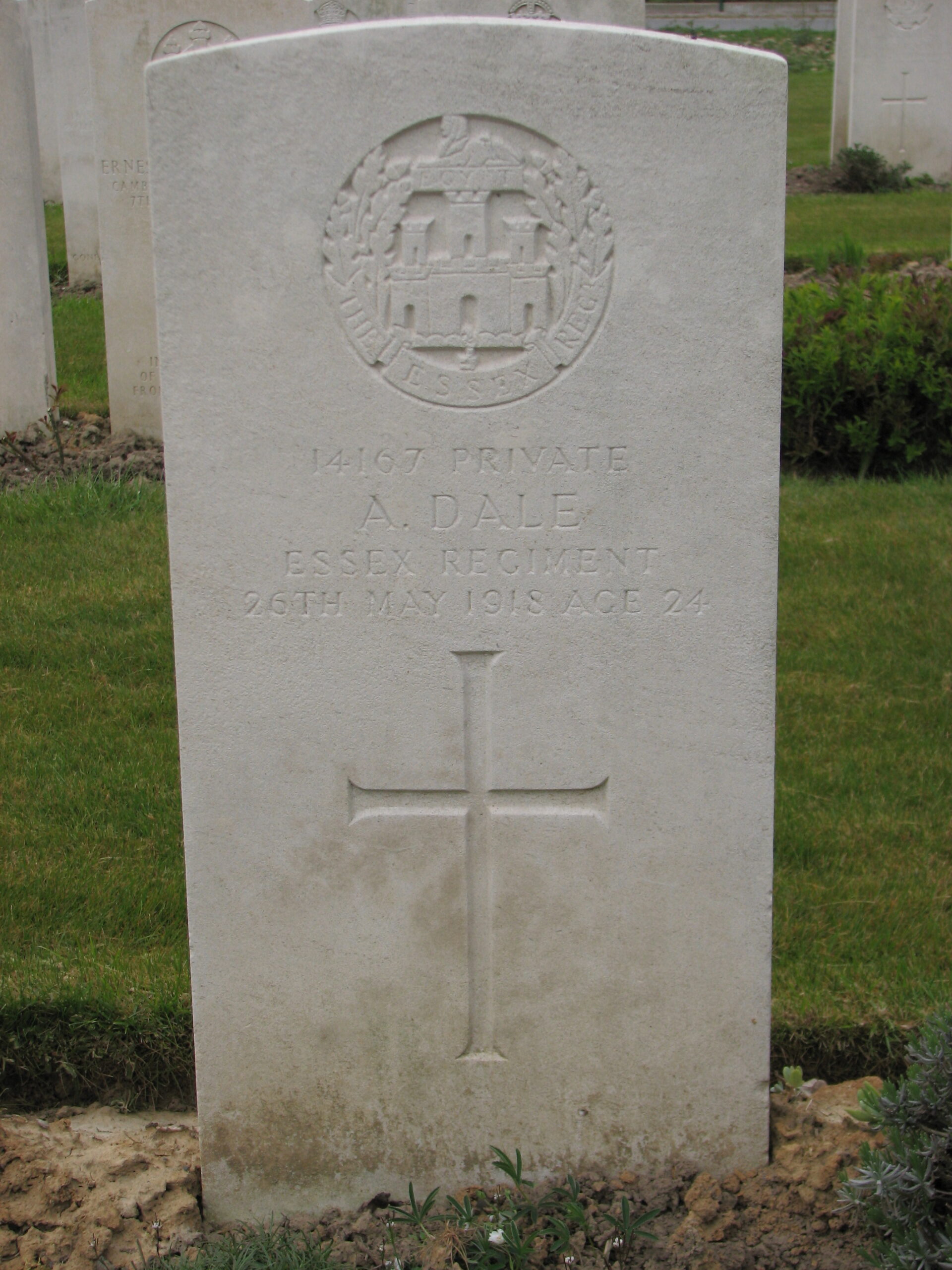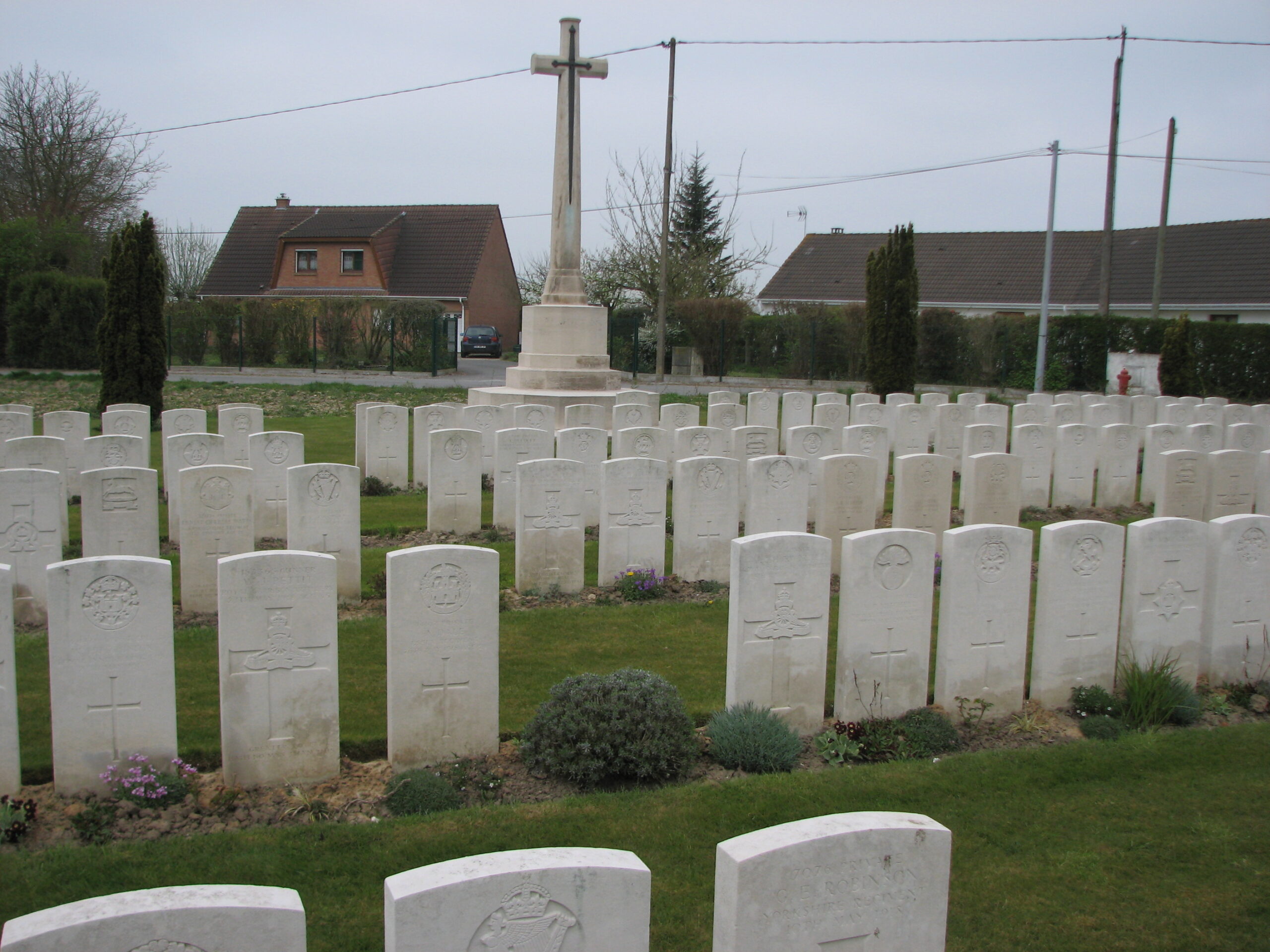Abram Dale (1894 - 1918)
Brother of John Dale and William Dale. Abram volunteered to join the Army in September 1914 and served for nearly 3 years on the Western Front with 11th Battalion, the Essex Regiment. He died of wounds in May 1918.
- 29
- Died in the Great War
- 51.979776, 1.021567
Details
| Name: | Abram Dale |
| Service: | British Army |
| Unit: | 11th Battalion, Essex Regiment |
| Regimental Number: | 14167 |
| Rank: | Private |
| Date of Death: | 26th May 1918 |
| Age: | 23 |
| Buried: | Plot II, Row D, Grave 25, Esquelbecq Military Cemetery, Esquelbecq, France |
The Dale family from Box Iron were one of three East Bergholt families to lose three sons in the Great War. Abram was the eldest son.
Family Background and Early Life
Abram Dale was born on 16th November 1894, the third child of Charles Abram and Esther Dale (nee Clark).
Charles who was from East Bergholt was a Farm Labourer at the time of Abram’s birth, though he later became a Horseman on a Farm. He and Esther – who was also from East Bergholt – married in 1889, and for a short time they lived at Mistley where Charles was employed as a Maltster. Their first child – a daughter who they called Emily – was born at Mistley, but they moved back to East Bergholt shortly afterwards.
Together Charles and Ester would have 11 children. They lived near High Trees Farm, though their address was also stated as 11 Box Iron, Box Corner or Quintons Corner.
Abram attended the village school from September 1899 until February 1908, when he was 13. After he left, he initially found work as a Farm Labourer, but was later employed at the British Xylonite works at Cattawade.
At the factory, Abram worked in the Colour Shop. This prepared all of the dyes and pigments for incorporation into the various mixes of the plastic, and required great care and attention to ensure that exactly the right colour was produced to meet the customer’s requirements.
Volunteers to join the Army
Abram volunteered to join the Essex Regiment, at Colchester on 7th September 1914, just over a month after Great Britain declared war on Germany following its invasion of neutral Belgium. He joined the Regiment’s newly formed 11th Battalion. This was the third battalion of the Regiment raised specifically for the War, in response to the large number of volunteers responding to Lord Kitchener’s call. 1 On 7th August 1914, Lord Kitchener, the Secretary of State for War and a national hero, issued his first appeal ‘an addition of 100,000 men’ to the Army. Within 2 months, nearly 750,000 men had enlisted.
The Battalion underwent most of their training at Shoreham on the south coast, except for short spells in Brighton and the Aldershot area. The 11th Essex were sent to France at the end of August 1915, the main party consisting of 26 officers and 839 Other Ranks (including Abram) sailed from Folkestone on the afternoon of the 30th and disembarked at Boulogne that evening.
Within a month of arriving in France, the 11th Essex were thrown into the maelstrom of the Battle of Loos. Over the next thirty-three months in France and Belgium they would see service in the line in the Ypres and Loos Salients, as well as being involved in the Battle of the Somme in 1916, and the Battle of Cambrai in November 1917. 2 Other East Bergholt men who served with the 11th Essex included:
Edward Clarke, from Burnt Oak, who died on 6th October 1916, from wounds he had received during the Battle of the Somme.Herbert Peck, from White Horse Road, who was killed in action on 22nd March 1918. Arthur Tatum, from near to the Hare and Hounds, who was wounded and captured on 22 March 1918. Released from a Prisoner of War Camp after the Armistice, Arthur died of his wounds on 9th February 1919.
On 10th October 1917, William – one of Abram’s brothers – died of wounds that he had received 6 days earlier, during the Third Battle of Ypres (commonly called the Battle of Passchendaele). 3 William John Dale, of the 9th Battalion, the Sherwood Foresters (Nottinghamshire and Derbyshire Regiment) was 21 when he died in hospital in Rouen, Normandy. He now rests in the St. Sever Cemetery Extension, at Rouen. Less than 2 months later, further tragedy struck when another of Abram’s brothers, John, was killed in action on 30th November, during the Battle of Cambrai. 4 John Dale of the 2nd Battalion, of the Coldstream Guards, was 20 when he was killed. John has no known grave, and is commemorated on the Cambrai Memorial, at Louverval.
The German Spring Offensive
By early 1918, the British Expeditionary Force were suffering from a manpower crisis and relatively low morale following the heavy fighting and limited success of the previous year. They knew that a major German attack was expected, but unfortunately they did not know where.
In contrast, the German Army on the Western Front had received a massive influx of manpower, having been able to transfer many divisions from the Eastern Front where Russians had signed an Armistice in December.
The 11th Essex were the Brigade Reserve – located near the village of Morchies – when the full force of the German offensive was unleashed on a 46 mile front, in the early hours of 21st March. 5 Morchies is a small village to the north of the Bapaume to Cambrai road. The 11th Essex had been in this area for most of the time since the Battle of Cambrai had ended, early in the previous December. Like many units at this time, the Battalion’s efforts were often directed towards fortifying the front line area, and the support positions just behind it. Over the next 3 days the 11th were heavily engaged trying to stem the German attacks. By the time they were relived on 24th March, they had lost 417 officers and men, killed, wounded and missing.
Return to Ypres Salient
Abram and what remained of the 11th Essex were then moved north, back to the Ypres Salient, and to what was intended to be resting and reorganisation. Shortly after their arrival, the Germans launched another offensive just to their south. It was an anxious time, and the Battalion were kept busy strengthening lines of defence, and ready to repel any German attacks.
A determined attack was not launched against them, and though the Battalion were only lightly engaged, they still suffered a number of casualties due to gas and shelling.
The 11th Essex spent most of May just to the south of Ypres, initially in Reserve but – from the 11th to the 24th they were back in the front line. Whilst there, elements of the Battalion took part in reconnaissance, fighting patrols and a trench raid. Activities that would be considered as a usual part of trench duty.
At some point during this period, Abram was wounded. He was evacuated from the front line via the “casualty clearing chain” – initially through the Regimental Aid Post and then the Field Ambulance. 6 The Field Ambulance was not a vehicle, but a mobile front line medical unit, manned by troops of the Royal Army Medical Corps. From there, Abram was moved to one of the two Casualty Clearing Stations situated at the village of Esquelbecq, in France.
Abram died of his wounds at the Casualty Clearing Station, on 26th May 1918. He was 23 years old.
He was buried in the nearby military cemetery which had been started to take those who had died at the Casualty Clearing Stations.
Postscript
Charles and Esther remained living in East Bergholt after the War. Esther Dale died in 1934 at the age of 66 and Charles died in 1950 at the age of 84. Both are buried in East Bergholt Cemetery.
Copyright © Mark Ashmore, 2024
- 29
- Died in the Great War
- 51.979776, 1.021567




